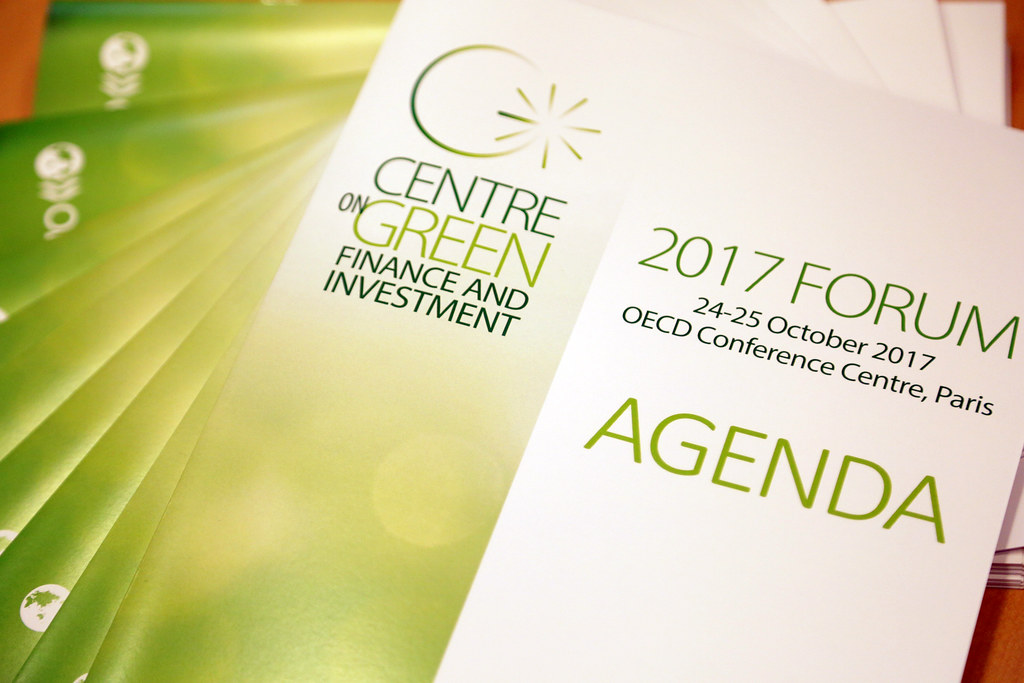Green investment strategies are not just a trend, they're a crucial shift towards a sustainable future. Did you know that investing in green technologies and sustainable practices can potentially offer higher returns than traditional investments? This approach not only benefits the planet but also opens up unique opportunities for investors. Discover how choosing green can lead to both financial gains and a positive impact on the world.

Green investment, fundamentally, revolves around allocating financial resources into projects and companies that are committed to sustainable environmental practices. This form of investment aims not only to generate financial returns but also to produce positive outcomes for the environment. As the global community becomes increasingly aware of environmental issues such as climate change and resource depletion, green investment has surged in popularity, becoming a critical component of the broader sustainable investing movement.
Exploring the concept of sustainable investing involves understanding how investments can drive progress toward environmental sustainability, social responsibility, and governance (ESG) criteria. Sustainable investing acknowledges that ESG factors can significantly impact the financial performance of investments and the well-being of the planet. Identifying key sectors and opportunities in green investment is crucial for investors looking to contribute to a sustainable future. These sectors often include renewable energy, green transportation, sustainable agriculture, and water management, among others. Each sector offers unique opportunities for contributing to environmental sustainability while seeking financial returns.
The importance of ESG criteria in green investing cannot be overstated. ESG criteria help investors evaluate companies based on their environmental stewardship, social responsibility, and governance practices. By prioritizing investments in companies that score high on ESG criteria, investors can support sustainable business practices while potentially mitigating risk and enhancing long-term returns. This approach aligns financial goals with the broader objective of promoting a more sustainable and equitable global economy.
When it comes to evaluating green investment opportunities, investors have a range of tools and metrics at their disposal for assessing sustainability and profitability. These tools include sustainability indexes, ESG ratings, and carbon footprint analyses, among others. By leveraging these metrics, investors can identify companies and projects that not only offer strong financial returns but also align with sustainable environmental practices. This dual focus on sustainability and profitability is essential for making informed investment decisions in the green sector.
Case studies of success stories in green investment provide valuable insights into the potential for sustainable investing to generate positive environmental impacts and financial returns. These success stories often feature companies that have successfully integrated sustainable practices into their operations and business models, leading to improved efficiency, reduced environmental impact, and enhanced profitability. By examining these case studies, investors can learn from real-world examples of successful green investments and apply these lessons to their own investment strategies.
Navigating the risks and challenges in sustainable investing is an essential aspect of evaluating green investment opportunities. While the potential for positive impact and financial return is significant, green investments can also be subject to unique risks, such as regulatory changes, technological advancements, and market volatility. Understanding these risks and developing strategies to mitigate them is crucial for investors seeking to build a resilient and profitable green investment portfolio.
| Aspect | Description |
|---|---|
| Focus Areas | Renewable energy (solar, wind, hydroelectric), green technologies, sustainable agriculture, clean water projects. |
| Financial Instruments | Green bonds, green mutual funds, ETFs, renewable energy certificates. |
| Investment Approach | Impact investing, using ESG criteria to screen investments. |
| Benefits | Competitive returns, job creation in new sectors, regulatory support, meeting investor demand for sustainability. |
| Future Trends | Technological advancements, regulatory changes, emerging opportunities in sustainable profits. |

Creating a diversified green investment portfolio is essential for investors looking to mitigate risks while maximizing their impact on environmental sustainability. Diversification strategies involve spreading investments across various sectors such as renewable energy, sustainable agriculture, green transportation, and water management. This approach not only reduces the risk associated with the volatility of specific industries but also opens up more opportunities for impactful investments.
Green bonds and renewable energy certificates (RECs) play a pivotal role in financing projects with environmental benefits. Green bonds are debt securities issued by governments, financial institutions, or corporations to fund projects that have positive environmental and/or climate benefits. Investing in green bonds allows individuals to contribute to the financing of renewable energy projects, energy efficiency upgrades, and pollution prevention, among others. On the other hand, RECs represent proof that electricity has been generated from renewable energy sources. Purchasing RECs supports the production of green energy and enables investors to claim that they are using renewable energy, even if they are not directly connected to a green power source.
Incorporating green mutual funds and exchange-traded funds (ETFs) into your portfolio is another effective way to engage in sustainable investing. These funds aggregate investments in various green companies or projects, providing investors with an easy way to gain exposure to a diversified portfolio of sustainable investments. Green mutual funds and ETFs are managed by professionals who assess the environmental impact, financial performance, and growth potential of investments, making them an attractive option for individuals who wish to invest in green projects but lack the time or expertise to evaluate each investment individually.
Green investment strategies not only focus on generating sustainable profits but also underscore the importance of environmental stewardship in the decision-making process. This holistic approach aligns perfectly with the principles of building commissioning, which ensures that newly constructed or renovated projects meet the highest standards of energy efficiency and environmental performance. Building commissioning is a critical step in the life cycle of a building, guaranteeing that it operates at the peak of its designed capabilities, thus minimizing environmental impact and reducing operational costs. For those interested in integrating these practices into their investment framework, understanding the role and benefits of building commissioning can provide a robust foundation for making more informed, sustainable investment choices. For further insights on this topic, explore The Importance of Building Commissioning.
For comprehensive insights into green investment strategies, including renewable energy, sustainable agriculture, and green bonds, visit the U.S. Department of Energy's website at www.energy.gov.
The landscape of green investing is rapidly evolving, driven by technological advancements, regulatory changes, and a growing awareness of environmental issues. As technology continues to advance, we are seeing a significant impact on sustainable investing. Innovations such as artificial intelligence and blockchain are improving the efficiency and transparency of green investments, making it easier for investors to track the environmental impact of their portfolios. Moreover, advancements in clean energy technologies, such as battery storage and carbon capture, are creating new investment opportunities that were once considered unfeasible.
Regulatory changes are also playing a crucial role in shaping the future of green investing. Governments around the world are introducing stricter environmental regulations and setting ambitious carbon neutrality goals, which are pushing companies to adopt more sustainable practices. This regulatory shift is not only mitigating risks but also opening up new avenues for investment in green technologies and sustainable infrastructure projects. Investors are increasingly factoring in these regulatory changes when assessing the long-term viability and profitability of their green investments.
Looking ahead, the next big opportunities in sustainable profits are likely to emerge from sectors that are currently under the radar. Innovations in sustainable agriculture, water management, and circular economy models present promising investment prospects. Additionally, the growing demand for green buildings and sustainable urban development projects offers significant potential for investors. As consumer preferences continue to shift towards sustainability, companies that innovate and adapt to these changes are poised to lead the next wave of green investment opportunities, offering both environmental benefits and attractive returns.